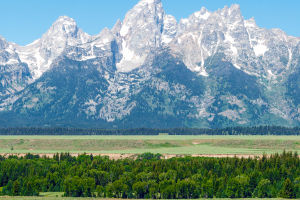RV travel has surged in popularity due to its unique blend of freedom and comfort.
It allows travelers to explore diverse destinations at their own pace while enjoying the conveniences of home on the road.
The ability to easily switch from one location to another without the need for constant hotel bookings or restaurant meals is a significant draw. RV travel also appeals to those seeking a more self-contained vacation experience, with the flexibility to stay in nature or visit popular attractions. Additionally, the ongoing desire for social distancing and safe travel options has made RVs a preferred choice for many.
Recommended RV Travel Routes in the United States
1. Yellowstone National Park Loop: The Yellowstone National Park Loop is a classic RV route that covers the stunning landscapes of America’s first national park. Starting in the park’s North Entrance near Gardiner, Montana, this route takes you through geothermal wonders, lush forests, and dramatic canyons.
Key stops include the Old Faithful geyser, the Grand Prismatic Spring, and Yellowstone Lake. The park offers several campgrounds, such as Fishing Bridge and Madison, which are well-suited for RVs. The scenic drive through the park provides ample opportunities for wildlife viewing and breathtaking vistas.
2. Route 66: Known as the "Main Street of America," Route 66 offers a nostalgic RV journey through classic America. Stretching from Chicago, Illinois, to Santa Monica, California, this route takes you through charming small towns, historic landmarks, and quirky roadside attractions.
Highlights include the Cadillac Ranch in Texas, the Route 66 Museum in Kingman, Arizona, and the Santa Monica Pier. Along the way, you'll find numerous RV parks and campgrounds that cater to travelers exploring this iconic route. This journey combines history, culture, and scenic beauty, making it a memorable RV adventure.
Tips for RV Travel
1. Plan Your Itinerary: Effective planning is crucial for a successful RV trip. Determine your route and book campgrounds in advance, especially during peak travel seasons. Research RV-friendly attractions and services along your route to enhance your trip experience.
2. Prepare Your RV: Before departure, conduct a thorough inspection of your RV to ensure it’s in good working condition. Check the tires, brakes, lights, and fluid levels. Familiarize yourself with the RV’s systems, including water, electrical, and waste management.
3. Drive Carefully: Driving an RV requires careful attention to road conditions and vehicle dimensions. Practice maneuvering in open spaces if you’re new to RV driving, and be aware of clearance heights and weight limits. Allow extra time for turns and braking.
4. Pack Wisely: Space is limited in an RV, so pack essential items efficiently. Bring along portable conveniences like a grill, outdoor furniture, and a compact toolkit. Prioritize items that enhance comfort and practicality.
5. Follow Campground Rules: Respect the rules and guidelines of each campground. Properly manage waste and follow environmental practices to ensure a positive experience for all visitors.
By understanding these aspects and choosing well-regarded routes, RV travel can offer an enjoyable and rewarding way to explore the diverse landscapes of the United States.
Lykkers, we hope this guide has sparked your interest in RV travel and inspired your next adventure! Have you hit the road in an RV or are you planning to? We’d love to hear your experiences and favorite routes. Share your thoughts and stories with us in the comments below—let’s keep the conversation going!


